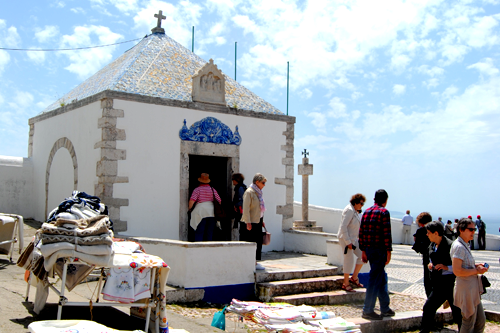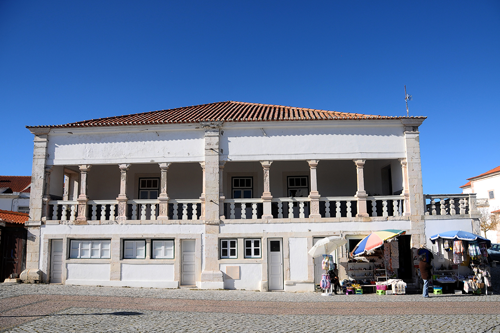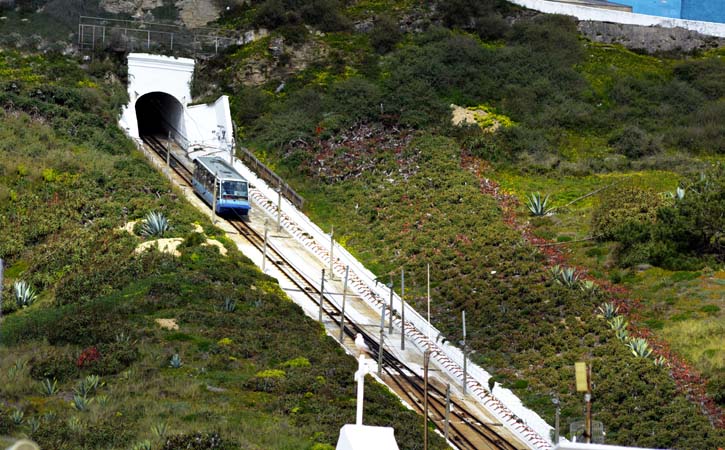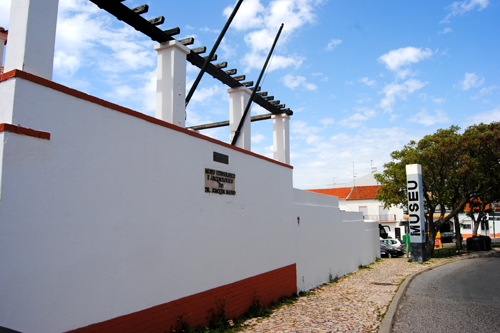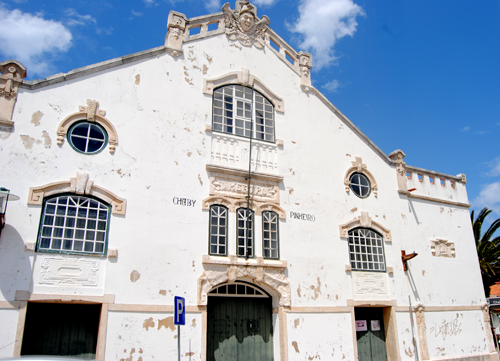What to visit in the Sítio da Nazare
The Sítio da Nazaré is an indispensable stop for those who visit Nazare, not only because of its own meaning, but above all because it is there that the vast majority of the attractions of this village are found and from where you can see, a good part of the rest of the attractions .
The Sítio da Nazaré was where it all started, this is where the Legend of Nazare and D. Fuas Roupinho duo made the origin and the formation of the village of Nazaré itself.
Nossa Senhora da Nazare Sanctuary
Built in the 14th century by order of D. Fernando, the Nossa Senhora da Nazare Sanctuary, is the oldest Marian Sanctuary in Portugal and is linked to the Legend of Nazare and D. Fuas Roupinho.
In that place and in function of the Sanctuary the Sítio da Nazaré and the village itself developed.
The Sanctuary of Nossa Senhora da Nazaré has been refurbished several times over the centuries and has been classified as a Property of Public Interest since 1978.
Memória Chapel
Built in the 14th century, over the legendary cave of Nazare, the Memória Chapel, like the Nossa Senhora da Nazare Sanctuary, is linked to the Legend of Nazare and the unavoidable D. Fuas Roupinho.
The roof of the vault of Memória Chapel is also covered with figurative tiles depicting D. Fuas Roupinho, which you cannot fail to contemplate.
Its connection to the Legend of Nazare makes Memória Chapel one of the most visited places not only by pilgrims but also by tourists and the curious, and a visit to the place is mandatory.
Royal Palace
Built in 1718, the Royal Palace of Nazare served to welcome the Royal Family during the visits of Kings, Queens and Princes to the Nossa Sehora da Nazare Sanctuary.
There are records confirming the stay of D. João VI accompanied by his sons, D. Pedro and D. Miguel and his mother Rainha D. Maria I.
In addition, the Royal Palace of Nazare has been established over the years as a place of accommodation for pilgrims.
Owned by the Confraria de Nossa Senhora da Nazare, due to its advanced state of deterioration, remodeling works have been underway with a view to returning to a place of accommodation.
Nazare Lift
Opened in 1889, the Nazare Lift is a funicular and an excellent example of transport architecture.
Add to that the fact that the Nazare Lift was designed by Eng. Raul Mesnier du Ponsard, disciple of the famous French engineer Gustave Eiffel, and responsible, among others, for the Elevador da Glória in Lisbon.
The purpose of building the Nazare Lift (also known as Elevador da Nazaré) was to allow easier access to the Nossa Senhora da Nazare Sanctuary, located at the top of the hill, at Sítio da Nazare, a pilgrimage site over the years.
Dr. Joaquim Manso Museum
Located at Sítio da Nazare the Dr Joaquim Manso Museum seeks to present the history of Nazare‘s identity elements from an ethnographic and archaeological point of view.
Also known as the Nazare Museum, this museum space located in the former holiday home of Dr. Joaquim Manso, focuses on the history of the village, the cult of Nossa Senhora da Nazare, the fishing arts and traditions.
Chaby-Pinheiro Theater
Unique example of recreational architecture, the Chaby Pinheiro Theater in Nazare dates from the beginning of the 20th century, and had a project by Ernestro Korrodi.
Built behind the Nossa Senhora da Nazare Sanctuary, it is a privileged stage for the cultural initiatives presented there and also for the richness of its interior.
Owned by the Confraria de Nossa Senhora da Nazare, it is closed to the public, yet it is still an architectural attraction that should not be missed.
Located in Sítio da Nazare, it is one of the attractions that make that place a must-visit place for all who visit Nazare.


